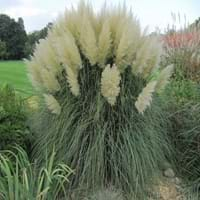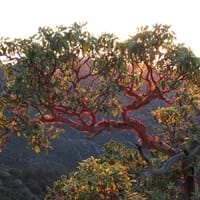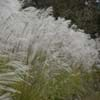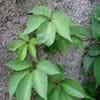Life Span
Perennial
Perennial
Origin
Mediterranean, Northern Africa
Southwestern United States, Mexico
Types
Not Available
Not Available
Habitat
marshes, Riverbanks
Woodlands
USDA Hardiness Zone
6-9
7-10
Sunset Zone
Not Available
8, 9, 10, 11, 12, 13, 14, 15, 16, 17, 18, 19, 20, 21, 22, 23, 24
Habit
Upright/Erect
Twisted/Contorted
Flower Color
Purple, Silver
White, Light Pink, Ivory
Flower Color Modifier
Bicolor
Bicolor
Fruit Color
Purple
Red, Coral, Orange Red, Dark Salmon
Leaf Color in Spring
White, Gray Green
Light Green
Leaf Color in Summer
Light Green
Green, Light Green
Leaf Color in Fall
Purple, Tan
Green, Light Green
Leaf Color in Winter
Purple, Tan
Green, Light Green, Dark Green
Leaf Shape
Grass like
Oval
Plant Season
Summer, Fall, Winter
Spring, Summer, Fall, Winter
Sunlight
Full Sun
Full Sun, Partial Sun
Type of Soil
Loam
Clay, Loam
The pH of Soil
Acidic, Neutral
Neutral, Alkaline
Soil Drainage
Well drained
Well drained
Bloom Time
Late Summer, Fall
Spring, Late Spring, Early Summer
Tolerances
Drought
Drought
Where to Plant?
Ground
Ground
How to Plant?
Seedlings, Vegetative
Stem Cutting
Plant Maintenance
Medium
Medium
Watering Requirements
Water once every two or three weeks
Requires regular watering
In Summer
Lots of watering
Lots of watering
In Spring
Moderate
Moderate
In Winter
Average Water
Average Water
Soil pH
Acidic, Neutral
Neutral, Alkaline
Soil Type
Loam
Clay, Loam
Soil Drainage Capacity
Well drained
Well drained
Sun Exposure
Full Sun
Full Sun, Partial Sun
Pruning
Cut back all stems to the same height
Remove dead or diseased plant parts
Fertilizers
0-10-10 NPK fertilizer
All-Purpose Liquid Fertilizer
Pests and Diseases
Drought, Edema
Red blotch
Plant Tolerance
Drought
Drought
Flower Petal Number
Single
Single
Foliage Texture
Fine
Medium
Foliage Sheen
Matte
Glossy
Allergy
Noxious Weed
Not Available
Aesthetic Uses
Borders, Showy Purposes
Showy Purposes
Beauty Benefits
Not Available
Not Available
Environmental Uses
Erosion control
Air purification
Medicinal Uses
Not Available
Not Available
Part of Plant Used
Leaves
Whole plant
Other Uses
Cultivated for fodder
Used as Ornamental plant, Used for woodware
Used As Indoor Plant
No
No
Used As Outdoor Plant
Yes
Yes
Garden Design
Cutflower, Dried Flower/Everlasting, Feature Plant, Mixed Border
Feature Plant, Foundation, Mixed Border, Rock Garden / Wall, Shade Trees
Botanical Name
SACCHARUM ravennae
ARBUTUS arizonica
Common Name
Hardy Pampas Grass, Plume Grass, Ravennagrass
Arizona Madrone
In Hindi
Plume Grass
Arizona Madrone
In German
Plume Gras
Arizona Madrone
In French
Plume Herbe
Arizona Madrone
In Spanish
Penacho de hierba
Arizona MADRONE
In Greek
Plume Grass
Αριζόνα Madrone
In Portuguese
Plume grama
Arizona Madrone
In Polish
Pióropusz Trawa
Arizona Madrone
In Latin
Kessinger Grass
Arizona Madrone
Phylum
Magnoliophyta
Magnoliophyta
Class
Lilopsida
Magnoliopsida
Clade
Angiosperms, Commelinids, Monocots
Angiosperms, Asterids, Eudicots
Tribe
Andropogoneae
Not Available
Subfamily
Panicoideae
Not Available
Number of Species
Not Available
Not Available
Difference Between Plume Grass and Arizona Madrone
If you are confused whether Plume Grass or Arizona Madrone are same, here are some features about those plants to help you choose better. Many people think that these two plants have the same characteristics, but one can see Plume Grass and Arizona Madrone Information and learn more about it. Fertilizers required for proper growth of Plume Grass are 0-10-10 NPK fertilizer, whereas for Arizona Madrone fertilizers required are All-Purpose Liquid Fertilizer. Hence, one should know the basic difference between Plume Grass and Arizona Madrone if you are planning to have them in your garden to enhance its beauty.
<
Flowering PlantsImportance of Plume Grass and Arizona Madrone
Want to have the most appropriate plant for your garden? You might want to know the importance of Plume Grass and Arizona Madrone. Basically, these two plants vary in many aspects. Compare Plume Grass and Arizona Madrone as they differ in many characteristics such as their life, care, benefits, facts, etc. Every gardener must at least have the slightest clue about the plants he wants to plant in his garden. Compare their benefits, which differ in many ways like facts and uses. The medicinal use of Plume Grass is Not Available whereas of Arizona Madrone is Not Available. Plume Grass has beauty benefits as follows: Not Available while Arizona Madrone has beauty benefits as follows: Not Available.
Compare Facts of Plume Grass vs Arizona Madrone
How to choose the best garden plant for your garden depending upon its facts? Here garden plant comparison will help you to solve this query. Compare the facts of Plume Grass vs Arizona Madrone and know which one to choose. As garden plants have benefits and other uses, allergy is also a major drawback of plants for some people. Allergic reactions of Plume Grass are Noxious Weed whereas of Arizona Madrone have Not Available respectively. Having a fruit bearing plant in your garden can be a plus point of your garden. Plume Grass has showy fruits and Arizona Madrone has no showy fruits. Also Plume Grass is not flowering and Arizona Madrone is not flowering . You can compare Plume Grass and Arizona Madrone facts and facts of other plants too.





